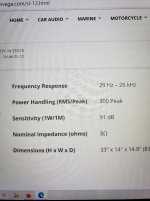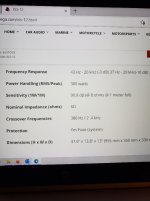CarbideBob
Diamond
- Joined
- Jan 14, 2007
- Location
- Flushing/Flint, Michigan
Lamp cord is good. Watch the ribbed side for polarity when connecting. This does matter. You do not want one woofer going the opposite direction of the other.
For the shop I just went to Home Depot and bought 50 and 100 foot extension cords and cut the ends off as it was even lower cost for the long runs and no need to "hide" the wiring.
Never a believer in all this gold stuff or super heavy gauge in speaker wire as it seems to make no sense.
There is an argument to be made for gold plated RCA interconnect cables between stuff in a stack over very long use and life span and where it has to live.
Much good talk here from member EPAIII even if it a bit or a lot confusing. JST also one here with lots of chips in his shoes in sound systems.
Bob
For the shop I just went to Home Depot and bought 50 and 100 foot extension cords and cut the ends off as it was even lower cost for the long runs and no need to "hide" the wiring.
Never a believer in all this gold stuff or super heavy gauge in speaker wire as it seems to make no sense.
There is an argument to be made for gold plated RCA interconnect cables between stuff in a stack over very long use and life span and where it has to live.
Much good talk here from member EPAIII even if it a bit or a lot confusing. JST also one here with lots of chips in his shoes in sound systems.
Bob






